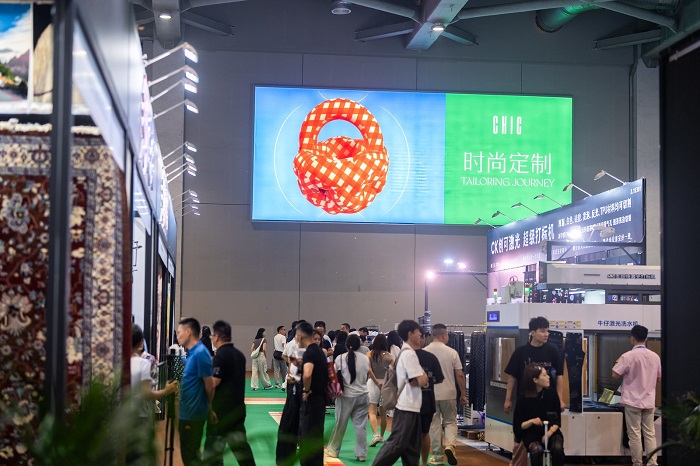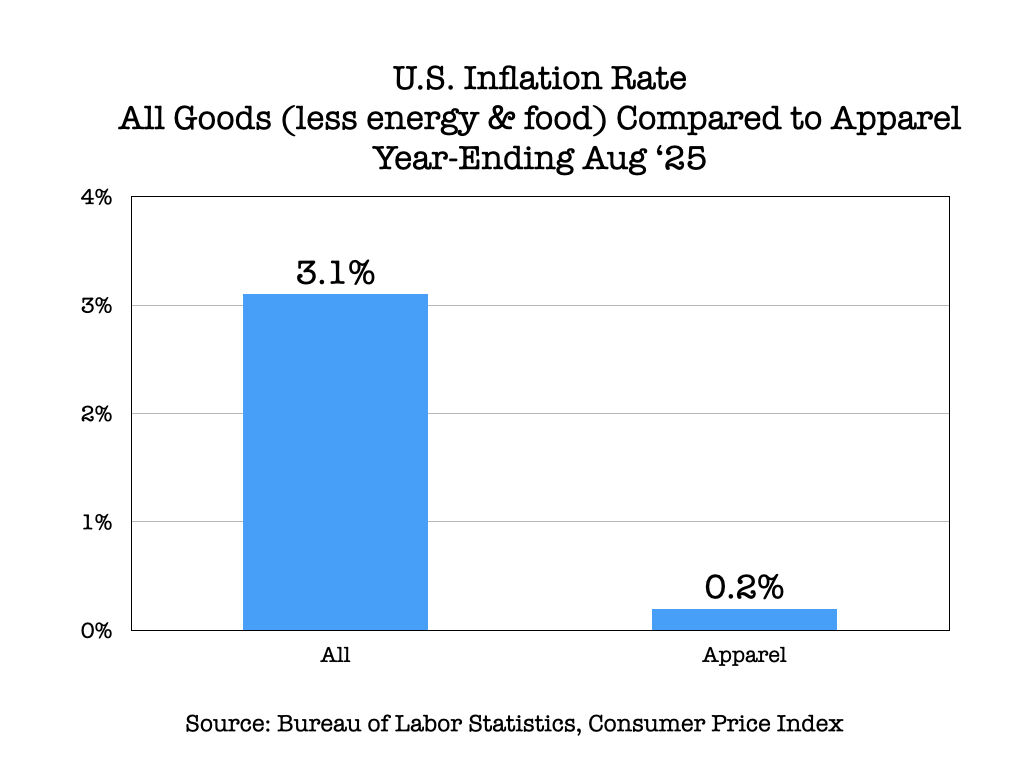FW
The European Parliament is all set to approve a textile agreement with Uzbekistan. This would lead to an increase in textiles imports from the country, despite ongoing concerns about the use of forced labour in cotton harvest. The pact will resolve the final missing element and also further lower tariffs on Uzbek textile imports.
The EU has a free trade agreement with Uzbekistan for everything since 1999 except textiles as it was a sensitive issue in Europe. But since then, textiles have become variably less sensitive because they have less of a textile industry. And so it is no longer sensible to exclude textiles.
Even with absence of an agreement, Uzbek textiles flow easily into Europe because of low tariffs with the category second only to chemical products in EU imports from Uzbekistan, at €38 million last year. The EU is nearly tied with Kazakhstan as Uzbekistan's third-largest trade partner, behind China and Russia. Bilateral trade last year totaled almost €2 billion.
Human Rights Watch, a US-based campaign group, however, blames the Uzbek government of forcing more than 1 million adults to pick cotton at harvest time. Cotton accounts for around 17 per cent of the country's exports and according to trade group Cotton Inc, the country is world's fifth-largest exporter of the fiber. Human Rights Watch and other groups successfully lobbied opposition in the European Parliament to the Uzbek textile agreement ahead of a planned vote in 2011 over the use of child labor in the cotton harvest, with parliamentarians then voting 603-8 against moving forward.
After a degree of slowdown in late 2015-16, Vietnam’s cotton imports have moved upwards again in the first few months of 2016-17. Imports in the period August to November, saw an estimated 18 per cent increase over the same period in 2015-16. This means it imported about 1.6 million bales.
The 12-month total (Dec 2015-Nov 2016) for Vietnam has now reached a record level and is expected to move higher. The United States Department of Agriculture (USDA) has raised the 2016-17 forecast for Vietnam’s imports to 5.0 million bales.
Rising demand is largely due to the fact that there is considerable demand for Vietnam-produced yarn in China. China customs data from August to October show, cotton yarn imports from Vietnam was up 200,000 bales. Vietnam’s spinning sector does not appear to have suffered unduly as a result of China’s internal cotton prices which are substantially lower than global levels. Many analysts expect to see spinning declining in countries that previously benefited from lower Chinese domestic spinning.
In particular, countries like India and Pakistan have experienced substantial decline in yarn exports to China. However, Vietnam’s continuing strong demand is supported by a rise in China’s yarn imports from Vietnam.
US apparel imports are down more than five per cent on a dollar basis for the first 10 months of 2016. On a square meter equivalent (SME) basis, 2016 year-to-date imports fell by 1.4 per cent, indicating a continuing shift toward lower-cost goods compared to the prior year. The cost per SME has dropped by 3.9 per cent so far this year.
China is the largest source of US apparel imports, with a 34.9 per cent share. But even China has lost 1.4 percentage points of US apparel imports so far in 2016, with its year-to-date apparel shipments to the US down 8.3 per cent from the same period last year.
Vietnam continued to gain share of US apparel imports in October. The number two source of US apparel imports after China, Vietnam has gained 0.9 percentage points of US apparel import share, representing 13.4 per cent of total imports.
Bangladesh, which has the third largest share of US apparel imports, saw its share of US apparel imports grow. Indonesia’s apparel shipments to the US are down by 4.2 per cent so far this year, an almost six per cent share. Apparel imports from Cambodia and Pakistan dropped the most of any top ten trading partner so far this year, down around 14 per cent each.
PVH has signed the UN Global Compact and the CEO Water Mandate. Tommy Hilfiger, a PVH brand, has also signed the CEO Water Mandate, which follows its multi-year partnership with WWF International. The American brand signed the mandate to reaffirm its commitment to responsible water use and stewardship.
These businesses have a global sustainable development agenda to improve water stewardship and improve access to clean water and sanitation. In 2016, PVH signed the UN Women’s Empowerment Principles and celebrated the 25th anniversary of ‘A Shared Commitment’, its code of conduct for business partners. The company also launched an enhanced global Corporate Responsibility strategy with 10 commitments that focus on empowering people, preserving the environment, and supporting communities.
PVH believes that by partnering the United Nations through its commitment to the UN Global Compact, CEO Water Mandate and Women’s Empowerment Principles, it can better drive progress in the areas that matter most to its business, industry and the world more broadly.
US outdoor clothing business Patagonia has called upon business leaders to get behind regenerative organic agriculture and refuse to accept green washing or cheaper alternatives. This move would reduce emission of greenhouse gases and help in avoiding environmental catastrophe. The Better Cotton Initiative is among textile standards singled out for not going far enough.
Rose Marcario, President and CEO of Patagonia, claimed that a growing number of corporations, researchers, journalists and practitioners are increasingly using terms such as regenerative, restorativAe and sustainable almost interchangeably without any clear sense of what we're talking about. She also bemoaned the fact that sustainable' claims are combined with conventional (non-organic) farming which defeats the purpose entirely. How can you rebuild soil ecosystems while simultaneously pumping the soil with pesticides and herbicides? she querried.
She cautioned people by saying that one shouldn't tolerate the watering down of agricultural practices that hold potential for enormous benefit to our suffering planet. The risks are too great. Meaningless terms with little or no concrete definition inundate consumers at every turn (even the label 'organic' can be slippery), causing confusion.
Even though Pakistan has lifted the ban imposed on cotton imports from India, exporters of the commodity are unable to capitalise on the move. Of the initial three million export orders in the October to December period, 1.5 million bales were exported to Pakistan last year. However, with daily arrivals still under at present, exporters are unable to secure new orders.
Pakistan had banned cotton imports from India in the fourth week of November on quality issue but after the industry urged the government, they lifted the ban a few days ago. According to Indian cotton industry, Pakistan may import about 700,000-800,000 bales of cotton in 2016-17. Last year, India exported 2.5 million bales of cotton to Pakistan which was facing crop failure, then.
Post demonetisation, several mandis are not fully operational yet with arrivals dwindling due to cash crunch. Cotton arrivals are down by 25-30 per cent compared to last year despite a slight improvement in early December.
Expert, the Global Apparel Company has named high-fashion label Studio Jux to its prestigious Dr Kenneth Wang Mentorship Program. The announcement was made by Alvanon’s CEO Janice Wang. The Kenneth Wang Mentorship Program was established in September 2011 by Alvanon to mentor emerging brands and design talent. It awards the winner a two-year mentorship with Alvanon’s leading industry apparel experts to help pave a sustainable path to success. The program is named after Kenneth Wang, who founded Alvanon in 2001.
Under the program, Alvanon will strengthen Studio JUX’s existing business competence with statistical sizing data, technical design tools and training in key areas of the art and science of fashion, including production, supply chain issues, fit, marketing and sales. Studio JUX was founded by Jitske Lundgren and Carlien Helmink in 2008 with the belief that fashion should be fun and enjoyable for everyone: for the designers, the people working in factories and customers wearing and using the product.
The sustainable, high-fashion label for men and women offers an alternative to fast fashion, focused on maximizing social economic impact while it’s minimizing environmental footprint. With fair-trade principles at the forefront of JUX’s brand identity, each garment is finely crafted by Nepali tailors under fair labor conditions, monitored by the Fair Wear Foundation. With the slogan ‘My Nepali Tailor Is a Rockstar,’ the Handshake program allows customers to “meet” the makers of their garments via virtual profiles on the label’s website.
Vietnam’s ministry of Industry and Trade says, this year, importers shifted a large number of textile and garment orders to Bangladesh and Cambodia where labour costs are lower than Vietnam. Trung Quy Company General Director Tran Van Quy said that the company’s orders are 30 per cent less than last year. The reason: increase in input costs leading to higher production costs. Simple outsourcing orders, therefore, are sent to other countries with lower labour costs.
Pham Xuan Hong - Chairman of the Ho Chi Minh City Association of Garment, Textile, Embroidery and Knitting said textile companies in southern Vietnam are in difficulty. The fourth quarter is usually the peak season, requiring a lot of overtime. However, this year, some members are still in need of orders. Businesses in the association, therefore, have to share orders with others to help them maintain production.
The problem would keep the sector’s 2016 growth under 10 per cent - the lowest growth over the last decade. The Vietnam National Textile and Garment Group (VINATEX) is expected to maintain a 10 per cent export growth, the same as in 2015 and reach export revenue of $3.5 billion this year. However, this growth is lower than expected.
These difficulties of the textile and garment industry are expected to continue up to the third quarter of 2017. And to get by, Vinatex plans trade promotion and looking for additional markets. The shortage of orders is the consequence of many problems, including higher costs, lack of self-controlled material supply, modest competitiveness and labor shortages. Vietnam Textile and Apparel Association (VITAS) Chairman Vu Duc Giang affirmed the sector needs to improve its supply chain’s capability to solve their current problems, heading towards sustainable development.
American Apparel may be sold to Canadian clothing maker Gildan Activewear. American Apparel makes colorful basics. The company has filed for bankruptcy. This year, American Apparel laid off at least 500 workers as it cut production. An additional 3500 employees may lose their jobs in January.
However, Gildan has no interest in buying American Apparel’s 110 stores in the US and 83 others around the world including UK, Ireland, Germany, Spain, Canada, Japan and Australia. The Canadian clothing company is more interested in buying some of American Apparel’s manufacturing plants in the US. But most production will probably move to Gildan’s manufacturing hubs in Central America and the Caribbean where it’s much lower cost than anywhere in the US.
Gildan Activewear bid 66 million dollars to acquire American Apparel’s Apparel’s intellectual property rights and some other assets. American Apparel, based in Los Angeles, began as a wholesale T-shirt business in 1998. It eventually built an image around provocative advertising for fashionable merchandise. But the hoped-for turnaround of the clothing manufacturer and retail chain—which has long grappled with shrinking sales and an outsize store footprint—did not happen. A plan to improve online selling didn't pay off, and, at a time when shoppers are going online in greater and greater numbers, American Apparel watched its online sales fall.
In recent years, the quality of China's down products has improved. China produces roughly 80 per cent of the world's down feathers from geese and ducks and consists of light, fluffy filaments growing from a central quill point, thereby creating a three dimensional structure which traps air and gives down the insulating ability. Down is designed to help keep waterfowl warm, but it is now commonly used and promoted as a natural stuffing for warm clothing and bedding for humans instead. Body feathers (from ducks, geese and other birds kept for meat or eggs) are also used to stuff pillows, cushions, bedding/clothing and other such items.
It takes the down from approximately 75 birds to make an average comforter. Although the majority of feathers come from China, they are also produced in Hungary, Poland, Turkey, the European Union and the US.
The massive amounts of feathers required to fill all the bedding, clothing and other down products sold across the world are primarily obtained from dead birds during the automated processes used by the food industry. However, for many there is an ethical difference between using feathers that are already a by-product of the poultry industry and live plucking birds for this resource.












